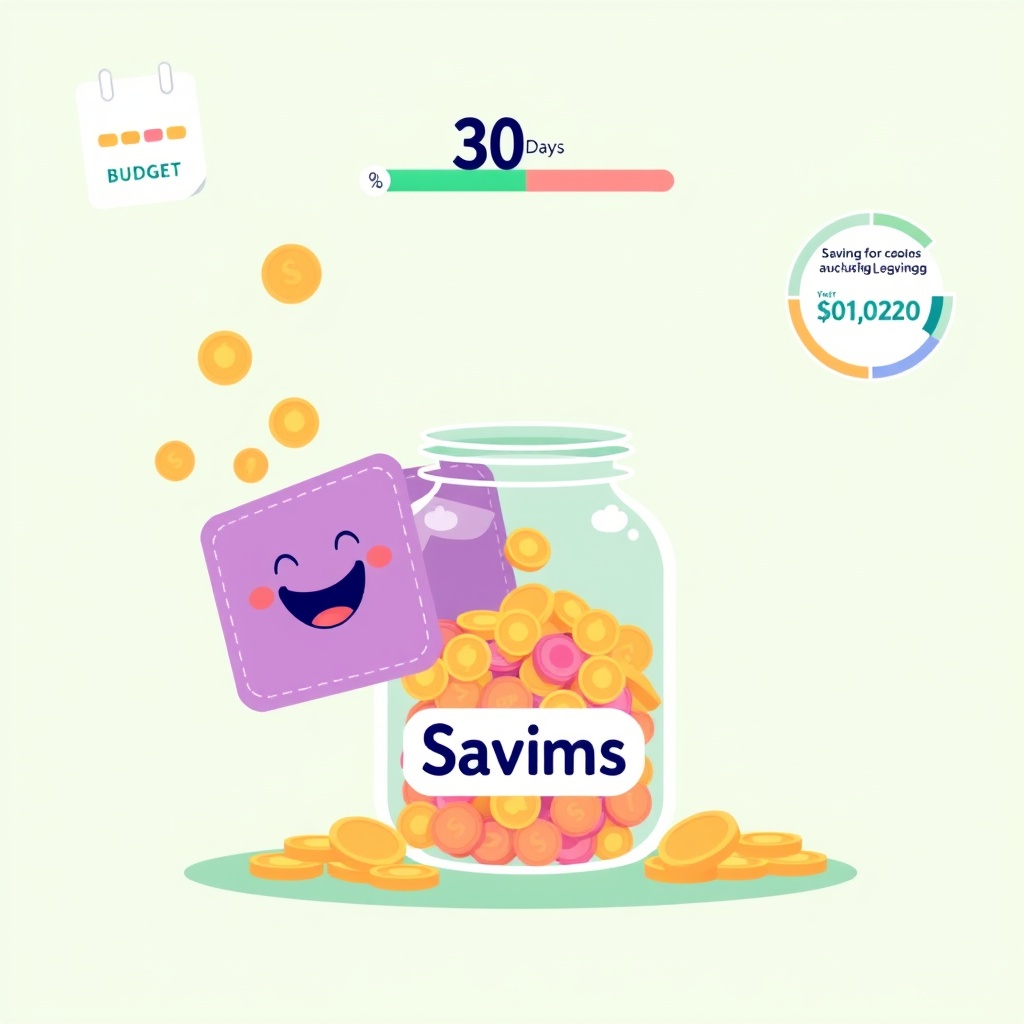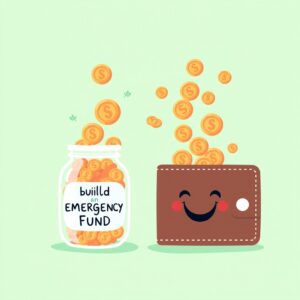Estimated Reading Time: 10 minutes
Key Takeaways
- The challenge focuses on essential spending to boost savings and reduce impulse purchases.
- Setting realistic goals and maintaining accountability are crucial for success.
- Integrating the challenge with budgeting tools and gamified techniques enhances engagement.
- Combining the challenge with other saving tactics can accelerate financial growth.
- Maintaining momentum through community support and prepared solutions ensures long-term results.
Table of Contents
- Introduction
- Understanding the 30-Day No Spend Challenge
- How to Budget with Challenges
- Fun Budgeting Challenges
- No Spend Weekend Ideas
- Gamified Saving Techniques
- Combining Challenges for Enhanced Results
- Tips for Maintaining Momentum
- Conclusion
- Additional Resources
Introduction
The 30-day no spend challenge is a powerful financial experiment that encourages individuals to focus only on essential spending for a month. This challenge involves pausing all non-essential purchases, which means spending only on necessities like rent, utilities, and groceries. The potential benefits of this challenge are myriad, including increased savings, reduced impulse buying, and a renewed awareness of your budgeting habits. Many financial educators advocate for this approach as a transformative tool to reshape spending practices and reinforce fiscal discipline – sources: PNC, The Poised Lifestyle, SoFi, Fidelity. If you’ve ever wondered how to budget with challenges effectively, this guide will lay out everything you need to know.
Understanding the 30-Day No Spend Challenge
- The 30-day no spend challenge centers on restricting all discretionary purchases. This means cutting out non-essentials such as clothes, dining out, and entertainment. The focus is solely on essential items like rent, utilities, groceries, and transportation – SoFi, Fidelity.
The core objectives include:
- Increasing savings by eliminating unnecessary spending.
- Breaking the cycle of overconsumption.
- Realigning financial priorities for long-term prosperity.
Setting realistic goals is crucial. Begin by determining which expenses are “allowed” and which are “not.” This preparation will help you remain steadfast in the challenge’s execution – Master Your Finances with the 50 30 20 Rule Calculator.
Accountability enhances success. Share your no spend journey with a friend or family member who can encourage and support you – Fidelity.
How to Budget with Challenges
- Integrating the no spend approach into your budget is vital for setting the stage for success. Start by differentiating fixed expenses, such as rent and insurance, from discretionary expenses, like entertainment and dining out. How to Track Discretionary Spending: A Comprehensive Guide to Managing Non-Essential Expenses.
Utilize tools like printable trackers or budgeting apps to log daily expenses. These can help maintain visibility over your spending – The Ultimate Guide to Using a Daily Expense Tracker App.
To keep your budgeting on target, review your progress daily or weekly to catch any spending leaks early. This practice will support you in maintaining motivation and ensuring that any unspent funds are purposefully redirected into savings or debt repayment – Fidelity, Life With Less Mess.
Fun Budgeting Challenges
To maintain excitement and interest, embrace fun budgeting challenges. These variations renew commitment and can make the financial exercise more enjoyable:
- No Spend Weekends: Choose weekends for essential-only spending; it’s a great way to ease into full no spend challenges – Life With Less Mess.
- Category Challenges: Cut out spending in specific areas, such as coffee shop visits or clothing purchases.
- Spending Freeze Days: Designate full days to abstain from any discretionary spending.
Encouragement can be further sparked through friendly competitions or rewards, ensuring every milestone in your challenge feels rewarding.
No Spend Weekend Ideas
Delve into no spend weekend ideas to adhere to your no spend philosophy even during your days off:
- Engage in free outdoor activities like hiking or attending community events.
- Pursue home-based hobbies, such as crafting or baking with ingredients you already have.
- Enjoy entertainment without monetary cost, like movie nights with pre-owned streaming services or engaging in family board games.
Planning meals in advance helps reduce the temptation of eating out, reinforcing that enjoyable weekends can be curated without needless spending.
Gamified Saving Techniques
Employing gamified saving techniques can elevate engagement and motivation for spending challenges:
- Use a rewards system where achievements—such as completing a week of no spend—are followed by free treats like a picnic in the park or a cozy movie night.
- Opt for savings bingo or envelope challenges to make saving money more engaging – Envelope Budgeting App: Your Guide to a Digital Envelope System.
- Introduce light-hearted competitions among friends to cultivate a collective drive towards financial betterment.
Digital tools, including budgeting apps, are excellent for tracking progress automatically and maintaining commitment through visual achievements and badges – The Simplest Budgeting App: Your Guide to Easy Money Management.
Combining Challenges for Enhanced Results
Amplify the impact of the 30-day no spend challenge by layering it with other strategic savings tactics:
- Use round-up savings apps, which transfer change from everyday transactions into savings.
- Undertake pantry challenges where cooking relies on what’s available at home instead of new grocery purchases.
- Initiate decluttering sprints where unused items are sold, earning additional income.
This combined approach not only enhances financial results but accelerates them too, fostering a robust environment for financial growth.
Tips for Maintaining Momentum
- Be prepared for the challenges that arise: temptation, social pressure, and moments of frustration are natural.
Prepare solutions like arranging free social activities or maintaining a “temptation fund” for special occasions.
Join community or group challenges for additional support, accountability, and creative ideas. Participating in engaging online forums or groups can provide that extra push needed to maintain enthusiasm and resolve – Fidelity.
Conclusion
The 30-day no spend challenge offers an effective strategy for resetting spending habits, establishing control over finances, and expediting savings. By incorporating gamified techniques and community support, even the most stringent budgeting plans can transition into enriching experiences and sustainable habits, promising long-term financial wellness.
Additional Resources
- Access printable spending trackers and budgeting templates to optimize your budgeting efforts – Life With Less Mess.
- Utilize recommended apps like habit trackers or savings games for enhanced tracking and motivation.
- Engage with online personal finance communities to share experiences and gain insights.
With the right tools, community support, and commitment, the 30-day no spend challenge sets the foundation for incredible financial transformation, marking the beginning of a voyage toward greater fiscal responsibility and enduring prosperity.
FAQ
What is a 30-day no spend challenge?
A 30-day no spend challenge is a financial exercise where individuals commit to only spending on essential items for a month, eliminating all non-essential purchases to boost savings and reduce impulse buying.
How can I stay motivated during the challenge?
Staying motivated can be achieved by setting realistic goals, tracking your progress with budgeting tools, engaging in gamified saving techniques, and seeking support from friends, family, or online communities.
What are some essential expenses allowed during the challenge?
Essential expenses typically include rent or mortgage, utilities, groceries, transportation, insurance, and any other necessary bills required for daily living.
Can I participate in the challenge alone?
Yes, you can participate alone, but sharing your journey with a friend or family member can enhance accountability and provide additional motivation and support throughout the challenge.
What should I do if I accidentally make a non-essential purchase?
If you accidentally make a non-essential purchase, acknowledge the slip without guilt, reassess your budget, and reinforce your commitment to the challenge moving forward.
“`



